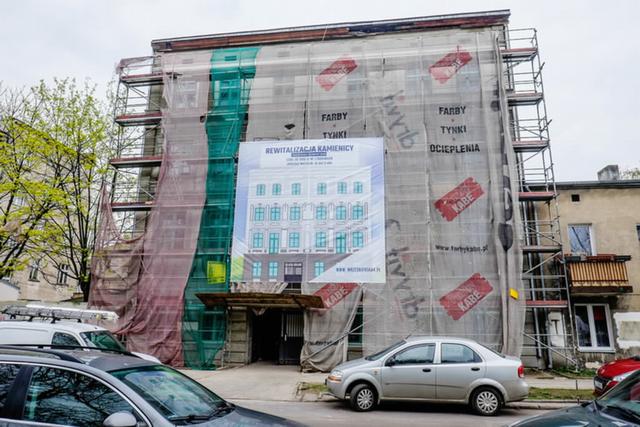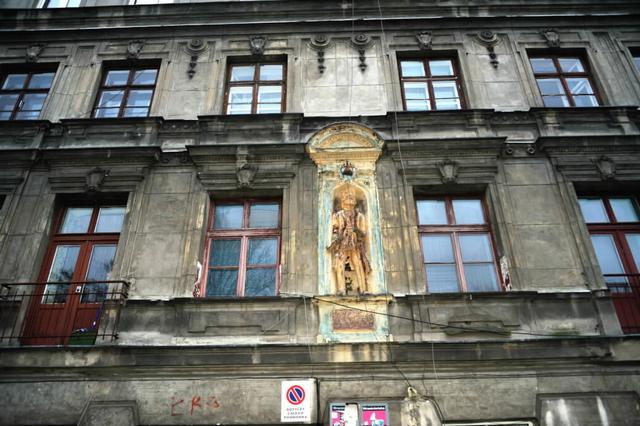| There is a stark contrast in the fate of Kosciuszko memorials in Lands of Liberty compared to places that have been occupied by tyrants. Not a single Kosciuszko memorial in the USA has ever been destroyed by the State. On the other hand, enemies of human liberty, the tyrants and tyrannies wielding and lusting endlessly for more and more power and control over human life, have attempted time and time again to eradicate Kosciuszko from living memory. In Poland, many of the Kosciuszko memorials visible today are replacements or replicas. The monuments have been rebuilt by local communities several times over, often using relics put in sanctuary by courageous individuals who risked their lives, because even in the darkest days of occupation by Germans or Russians, despite feelings of oppression and wilderness, Kosciuszko, the man and legend, provided eternal hope in the hearts and minds of generations of people.
The expression ‘Sword of Damocles hangs over head’ is illustrative of the paranoid mindset of dictators, tyrants and occupying forces. They are aware that the potential for revolt is for ever just below the surface and the power they wield over people is lusted for not only by their underlings and associates, but also by others in the broader community, anonymous or not.
The sculptor Andrzej Pitynski observes that: “A monument is an expressive symbol. A good one looked at for even a few minutes will remain in memory for years or even for one’s entire lifetime. Monuments are the milestones in a nation’s history — they will not allow other systems and governments to destroy the core values of a national culture.” Pitynski’s biographer Donald Reynolds adds: “Monuments when properly celebrated can become forces within society for the perpetuation of traditions and human values.”
There is a multiplicity of reasons why occupying forces perceived Kosciuszko monuments to be a threat. Authoritarians and dictators find the sound of laughter and joy dangerous. Kosciuszko memorials were a focal point for communal celebrations of anniversaries and meeting places for paying homage, for reflection and inspiration. Totalitarian states depend on their survival by creating ‘loneness’. Each individual in the community feels isolated through distrust of each other; even of family and close friends. Each feels that everybody else has buckled to the oppression and is a potential informer. Each resigns themself to passive forbearance of the oppression and thereby the potential for collective resistance is stifled.

|

|
Nevertheless resistance takes place. Case in point is the ingenuity behind the continuous survival of the oldest Kosciuszko memorial in Lodz. In 1902, owner and master builder Stefan Szylke, knowing that tyrannies fear visual symbols of freedom, tried to improve his chances of getting building approval for a pediment statue from the Russian tsarist authorities ruling Lodz at the time, so he persuaded those in power that the Kosciuszko statue he was erecting to decorate the pediment on the three-story town house designed for him by the architect Stephan Lemene was actually a folk sculpture of a Krakowiak.
However, after the house at Wrzesnienska 4, in the Baluty district of Lodz, was built, the respect that passers-by gave to the statue drew suspicions and Szylke had to bribe officials to turn a blind eye. When Poland regained its independence at the end of WWI, Szylke added the inscription: “Tadeusz Kosciuszko – 1903” below the sculpture. In 1939, to save the Kosciuszko statue from destruction by the German invaders occupying Poland, the statue was disguised as a saint. When the Germans turned the vicinity into a Jewish Ghetto, to secure the Kosciuszko statue, the Jewish residents successfully concealed the pediment behind building-coloured plywood.
Demolition plans by the communist tyranny were not carried out and the house, with the Kosciuszko statue intact, was bought by Grzegorz Religa from Krakow. To highlight and promulgate the compelling narrative, history and symbolism linked to the monument, and to preserve it for the benefit of future generations, in 2012, the current owner renovated the building under the supervision of a professional conservator. Now in pristine condition, the statue survives as the oldest Kosciuszko monument in Lodz.
Two hundred Kosciuszko Memorials worldwide. Each monument tells a story. It would be wonderful if the story behind the oldest Kosciuszko monument in Lodz inspired submissions to the Kosciuszko Bicentennial Contest organised by Kosciuszko Heritage Inc. (KHI) that was announced on 4th February, 2017.www.kosciuszkoheritage.com/200/en_competition.html
Perhaps it may even inspire a high school student or resident of Otwock, Poland, because Otwock is the ONLY place in Poland that I am aware of that has a ‘lost Kosciuszko monument’. It is the only place in Poland that had a Thaddeus Kosciuszko monument that was destroyed by the Germans or Russians or both that no longer exists. ALL the others have been rebuilt, some better and bigger than ever before.
Felix Molski
www.dzienniklodzki.pl/wiadomosci/lodz/kocham-lodz/a/tadeusz-kosciuszko-z-balut-po-renowacji-ma-sasiadowac-z-galeria-street-artu,9885664/
www.fakt.pl/wydarzenia/polska/krakow/wlasciciel-kamienicy-przy-ul-wrzesnienskiej-4-wyremontuja-ja-i-posag-kosciuszki/yn9yrmg
www.uml.lodz.pl/miasto/aktualnosci/?news=21362
www.polskaniezwykla.pl/web/place/1576,lodz-zapomniany-pomnik-tadeusza-kosciuszki.html
www.ocenlodz.pl/viewtopic.php?f=62&t=903
These related links are all in Polish.English readers can us Google Translate to get the gist of each article:
translate.google.com.au/?ie=UTF-8&hl=en&client=tw-ob#auto/en/
Kosciusko's memory insulted
The better known Kosciuszko Monument unveiled on Liberty Square, Lodz, on December 14, 1930 had a different fate. The German occupiers wantonly destroyed it in 1939. But the Polish spirit is irrepressible and after the war it was rebuilt and unveiled at Liberty Square, July 22, 1960.
| 

